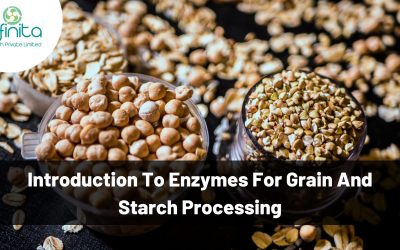
Benefits of Eco Enzyme for Agriculture and Well-being
In today’s world, where sustainable practices and holistic well-being are gaining prominence, the eco enzyme has emerged as a remarkable solution with numerous benefits for both agriculture and overall well-being. This powerful organic concoction offers a multitude of advantages, ranging from environmental benefits to improved plant growth and personal health benefits. In this article, we will delve into the various advantages of eco enzymes and explore their potential applications in agriculture and well-being.
Introduction
An eco enzyme, also known as a fruit enzyme, is a natural and eco-friendly solution produced by fermenting organic waste materials such as fruits, vegetables, and brown sugar. The fermentation process yields a liquid rich in beneficial microorganisms and enzymes, which possess remarkable properties that can be harnessed to improve agriculture and well-being. Let’s take a closer look at the advantages it offers in both these domains.
Environmental Benefits of Eco Enzyme
One of the key advantages of eco enzyme lies in its environmental benefits. By utilizing eco enzymes in agricultural practices, the dependence on chemical fertilizers and pesticides can be significantly reduced.
By reducing the adverse effects of detrimental chemicals on the environment, this decrease simultaneously promotes the preservation of soil health and fertility.
Furthermore, eco enzyme plays a vital role in preventing water pollution. Traditional farming methods often result in chemical runoff, which contaminates water bodies and harms aquatic ecosystems. On the flip side, an eco enzyme aids in the decomposition of pollutants and the elimination of harmful substances, diminishing the potential for water pollution and fostering a more wholesome environment for all living beings.
Agricultural Benefits of Eco Enzyme
When it comes to agriculture, eco enzyme offers a plethora of benefits that promote plant growth, improve yield, and enhance overall crop quality. One of its notable advantages is the enhancement of nutrient absorption. The enzymes present in eco enzymes break down organic matter, releasing essential nutrients that become readily available for plants to absorb. This improves nutrient uptake efficiency, leading to healthier and more robust crops.
Additionally, eco enzyme exhibits natural pest and disease control properties. The enzymes and microorganisms present in eco enzymes create an unfavorable environment for pests and harmful pathogens, reducing the need for chemical pesticides. This approach not only ensures a safer and healthier harvest but also contributes to the sustainability of agriculture by minimizing chemical inputs.
Health Benefits of Eco Enzyme
Apart from its agricultural benefits, an eco enzyme also offers numerous advantages for personal well-being. One of its notable health benefits is its ability to boost the immune system. The enzymes and beneficial microorganisms present in eco enzyme work synergistically to enhance the body’s immune response, thereby reducing the risk of infections and diseases.
Moreover, eco enzyme possesses detoxification and cleansing properties. When consumed, it aids in flushing out toxins from the body, promoting detoxification and improving overall metabolic function. This cleansing effect can positively impact digestion, skin health, and overall vitality.
Application Methods of Eco Enzyme
To harness the benefits of eco enzymes effectively, various application methods can be employed. One common method is spray application, where a diluted eco enzyme solution is sprayed directly on the plants’ leaves. This allows for easy absorption of enzymes and nutrients, providing an immediate boost to plant health.
Another method is soil treatment, where an eco enzyme is applied directly to the soil. This method improves soil structure, increases microbial activity, and enhances nutrient availability for plants. It can be particularly beneficial for restoring degraded soils and promoting long-term sustainability in agriculture.
Additionally, eco enzymes can be utilized in composting to accelerate the decomposition process and enhance the quality of compost. Adding eco enzyme to compost piles helps break down organic matter faster, resulting in nutrient-rich compost that can be used to enrich soil fertility.
Case Studies and Success Stories
Numerous case studies and success stories highlight the remarkable benefits of eco enzymes in agriculture and well-being. Farmers who have adopted eco enzymes in their practices have reported improved crop yields, reduced dependency on chemical inputs, and enhanced soil health. These positive outcomes have not only translated into economic benefits but have also contributed to the ecological balance of their farming systems.
Individuals who have incorporated eco-enzymes into their daily routines have experienced improvements in their overall well-being. From increased energy levels to better digestion and healthier skin, the positive impact of eco enzymes on personal health is evident in many testimonials.
Safety and Sustainability
One of the remarkable aspects of an eco enzyme is its safety and sustainability. Unlike chemical fertilizers and pesticides, an eco enzyme is non-toxic and poses no harm to humans, animals, or the environment. This makes it an ideal choice for those seeking sustainable alternatives in agriculture and personal well-being.
Moreover, the production of eco enzymes promotes waste reduction and recycling. By utilizing organic waste materials, eco-enzyme production contributes to a circular economy, minimizing the environmental burden associated with waste disposal.
Conclusion
Eco enzyme offers a wide range of benefits for agriculture and well-being. From reducing chemical usage and improving soil health to promoting plant growth and boosting personal well-being, an eco enzyme is a versatile solution with immense potential. By embracing eco enzymes in agricultural practices and personal routines, we can contribute to a more sustainable and healthier future.
FAQs
Is eco enzyme safe to use in organic farming?
Yes, an eco enzyme is safe and widely used in organic farming practices due to its non-toxic and eco-friendly nature.
Can eco enzymes be used on all types of crops?
Yes, eco enzymes can be used on a variety of crops, including fruits, vegetables, grains, and ornamental plants.
How frequently should eco enzyme be applied to plants?
The application frequency of eco enzyme may vary depending on crop type, growth stage, and environmental conditions. It is recommended to follow product instructions or consult with agricultural experts for specific guidance.
Can eco enzymes be used in hydroponic systems?
Yes, eco enzymes can be used in hydroponic systems. However, it is essential to ensure that the dilution ratio and application method are appropriate for the specific hydroponic setup.
Where can I get access to eco-enzyme products?
Eco-enzyme products can be obtained from agricultural supply stores, online marketplaces, or by contacting local eco-enzyme producers.
ALPHA AMYLASE FOR LIQUEFACTION
This high temperature Alpha Amylase convert Starch into Dextrin.

Reduces
Viscosity

Dextrins
Generation

Free Sugar
Generation
BETA AMYLASE
Our Beta Amylase can be used for the production of Maltose Syrup.

Maltose
Generation

De-branchng Of
Dextrins

Reduces Viscosity
GLUCO AMYLASE FOR SACCHARIFICATION
Our Gluco Amylase is useful for converting Dextrin into Glucose.

High Glucose Syrup

Pullanase Activity

Thermal And Ph Stability
What are Starch Processing Enzymes and Their Key Functions?
Introduction to Starch Processing Enzymes Starch processing enzymes are specialized proteins that facilitate the breakdown of starch, a complex carbohydrate, into simpler sugars. These enzymes play a pivotal role in various industrial applications, transforming starch...
Application of Enzymes in Starch Processing
Enzymes are biological molecules that are essential for various metabolic processes in living organisms. Various industrial processes such as food processing, pharmaceuticals, and textiles also utilize enzymes. Enzymes play a crucial role in the field of starch...

Benefits of Eco Enzyme for Agriculture and Well-being
Starch is the essential raw material used in liquid sugar production. Liquid sugar, also called glucose syrup, is a condensed solution gained from starch by enzyme hydrolysis.
The enzymatic procedure to hydrolyse starch is a more effective and simple process than acid hydrolysis. The process is basically divided into two phases – liquefaction and saccharification.
Liquefaction: An Overview
The liquefaction process includes the gelatinisation of the starch and its treatment with alpha-amylase (𝛂-amylase). The 𝛂-amylase breaks down the starch into even-sized chains, resulting in maltose, dextrin, malt-pentose, and malt-triose. This process is followed by saccharification, the second stage of enzymatic hydrolysis of starch.
Effect of liquefaction time and enzyme addition on liquid sugar production
Glucose production will be greater if there is a longer hydrolysis process. The process can be prolonged with longer liquefaction, resulting in increased glucose content. With a longer liquefaction time, higher glucose content can be obtained since it helps in better fragmentation of starch into glucose. However, an excessively long liquefaction process and enzyme addition can have an adverse effect. It may happen due to a specific activity of α-amylase.
During enzyme hydrolysis, it is essential to run the liquefaction effectively with the right timing; otherwise, the desired result wouldn’t be gained. The effectiveness of the liquefaction process can be ensured by proper conditions for processing and adding the right amount of enzymes.
Types Of Enzymes Used In Starch Liquefaction Process
Different enzymes can optimise the starch liquefaction process in terms of quality, cost, and efficiency of the process, considering a range of conditions. The following are the widely used enzymes in the starch liquefaction process;
Alpha-amylases
Alpha-amylase breaks down the starch under the right circumstances, initiates the liquefaction process and converts starch into liquid sugar. It is an enzyme that initiates the degradation of starch molecules and hydrolysis of starch to break it into small chains. Nearly all living organisms widely produce this enzyme. These enzymes have applications in various food-related industries, and the liquefaction of sugar is a primary one among them. Apart from that, they are used during baking as an antistaling agent in bread.
Where To Get Enzymes For Liquefaction?
Starch liquefaction is a process utilised by numerous industries like food, beverages and pharmaceuticals; therefore, liquefaction enzymes have numerous applications in these industries. If you are operating an industrial unit and need enzymes for liquefaction but don’t know where to get them, Infinita Biotech is the solution. We are one of India’s leading biotech firms known for our assorted range of industrial enzymes and solutions. The array of solutions and products offered by us deliver numerous benefits that conventional chemicals and processes can not provide. With products and solutions provided by Infinita Biotech, industrial units can have the benefits like optimum quality, reduced production cost, minimal wastage and lower consumption of energy.
0 Comments
Submit a Comment
You must be logged in to post a comment.
ALPHA AMYLASE FOR LIQUEFACTION
This high temperature Alpha Amylase convert Starch into Dextrin.

Reduces Viscosity

Dextrins Generation

Free Sugar Generation
BETA AMYLASE
Our Beta Amylase can be used for the production of Maltose Syrup.

Maltose Generation

De-branchng Of Dextrins

Reduces Viscosity
GLUCO AMYLASE FOR SACCHARIFICATION
Our Gluco Amylase is useful for converting Dextrin into Glucose.

High Glucose Syrup

Pullanase Activity

Thermal And Ph Stability
What are Starch Processing Enzymes and Their Key Functions?
Introduction to Starch Processing Enzymes Starch processing enzymes are specialized proteins that facilitate the breakdown of starch, a complex carbohydrate, into simpler sugars. These enzymes play a pivotal role in various industrial applications, transforming starch...
Application of Enzymes in Starch Processing
Enzymes are biological molecules that are essential for various metabolic processes in living organisms. Various industrial processes such as food processing, pharmaceuticals, and textiles also utilize enzymes. Enzymes play a crucial role in the field of starch...
Introduction to Enzymes for Grain and Starch Processing
Enzymes play a critical role in the grain and starch processing industry. They are biological catalysts that speed up chemical reactions and allow for the production of high-quality products with increased efficiency and lower costs. In this article, we will explore...




0 Comments